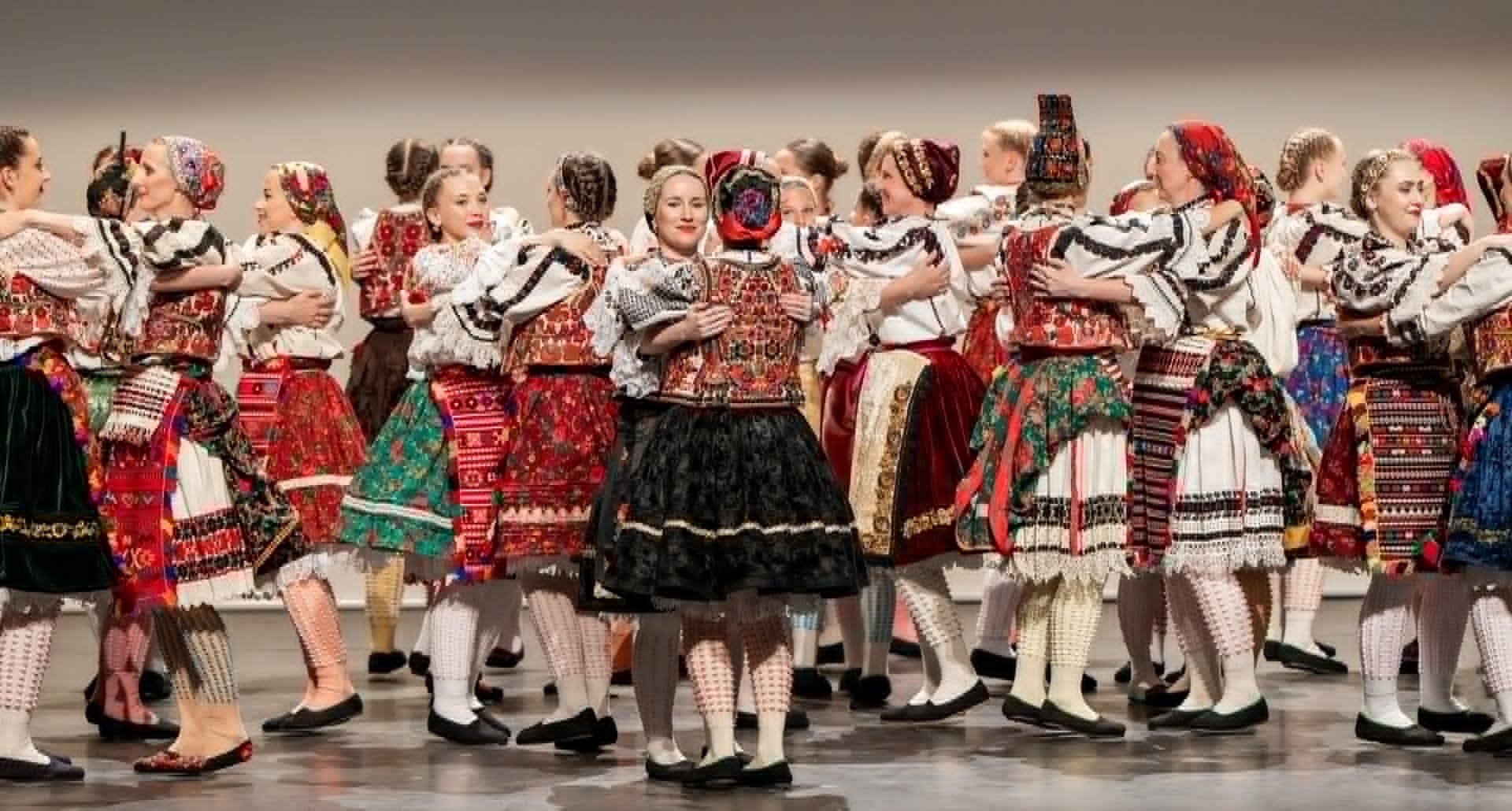Tanac Folk Dance Ensemble was founded in 1988 by young people from the Croatian villages around Pécs. From the beginning, its mission has been to collect, present on stage, and preserve the dances, music, costumes, and folk traditions of the Croatian minority in Hungary, while also featuring the dances of neighbouring peoples and choreographic works inspired by the music of Béla Bartók.
The ensemble has always aimed to present the traditions it collects with such authenticity and artistic quality that its performances are received with the same joy in the smallest Croatian village as on the largest stages – in Pécs, Zagreb, Budapest, or even Washington, D.C.

Over the decades, Tanac has built strong ties with the Croatian villages; most of its members still commute from these communities to rehearsals. Hundreds of young dancers have learned dances and songs in its children’s and youth groups, dance houses, and summer camps. The ensemble has received numerous awards and excellent professional ratings, including from the television competitions Ki mit tud? and Fölszállott a páva. In 2013 it received the Cultural Grand Prize of the City of Pécs, and in 2025 it was awarded Honorary Charter by the President of the Republic of Croatia.
Since 1996, Tanac has organised the international Croatian festival “Welcome, dear guest!”, which has welcomed thousands of participants to Pécs. The ensemble’s work has always been supported by outstanding musicians, including the legendary Antus Vizin and his band.
Today, Tanac continues to pursue the same mission: contributing to the cultural survival and vitality of the Croatian community in Hungary. As their mentor, teacher László Matusek, once said: “Let the costume be in order, let the music and singing sound pure, let the dance bring joy to the audience — and may you be good.”
More: http://www.tanac.hu
